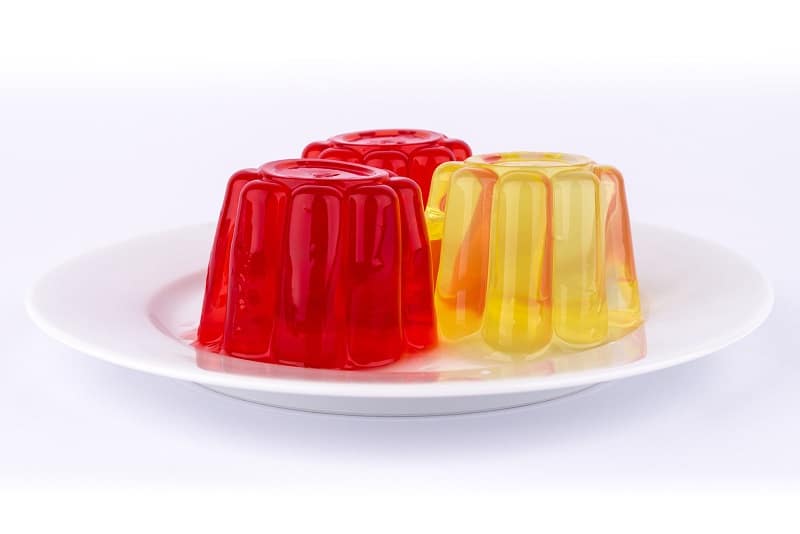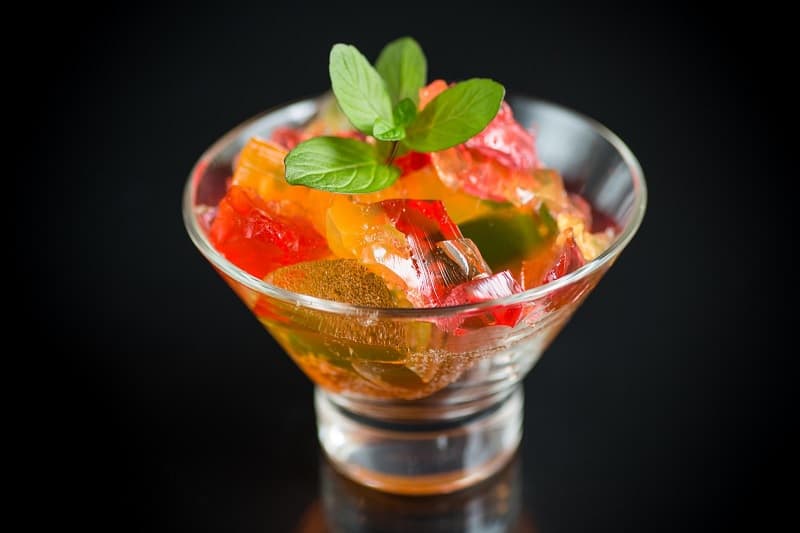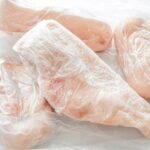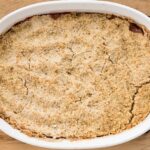Homemade jelly should take around 4 hours to set in the fridge. However, it is possible to get jelly to set in as little as 15 minutes if you use a freezer.
Read on to find out how to set your jelly using a fridge or freezer.
Almost all make-at-home jelly contains gelatine. This powerful protein has long strands which when cold enough, twist tightly around each other, sucking in water in the process.
These strands become harder to pull apart as jelly cools, eventually setting into the wibbly, wobbly dessert we know and love.
Not all make-at-home jellies take the same time to set. Take a look at the brands below. Each one has a slightly different guideline setting time.
- Hartley’s Jelly Cubes (all flavours) – Sets (in fridge) in around 4 hours
- Hartley’s Jelly Crystals (sugar free, all flavours) – Sets (in fridge) in around 4 hours
- Hartley’s Glitter Jelly – Sets (in fridge) in around 2 hours
- Jell-o Powders (all flavours) – Sets (in fridge) in between 2 and 4 hours
- Moir’s Jelly Powder – Sets (in fridge) for at least 4 hours
What Temperature Does Jelly Set At?
Most homemade jellies, made from scratch or using a store-bought product, will set completely at around 4°C, as this is gelatine’s preferred setting temperature.
At temperatures closer to freezing (0°C), any gelatine in your jelly will permanently de-activate. This means your jelly will freeze solid, but will not regain its gel-like texture. Put simply, cooling jelly below about 2°C will ruin it.

An (Almost) Instant Way to Set Jelly Using a Freezer
Sending your jelly for a quick icy blast in the freezer will help the gelatine in your jelly to firm up. But be warned; freeze for too long and you’ll be left with hard, inedible jelly that will not wobble.
Here’s an almost instant way to set jelly using a freezer.
- Locate the largest baking tray or dish you have, ideally non-stick and in good condition. Metal trays are your best bet; glass dishes can crack if their temperature changes too quickly. The larger the surface area, the quicker your jelly can set.
- Place your chosen jelly-holder in a freezer for as long as possible. Even a quick 15-minute chill should cut down the time it takes your jelly to set.
- In a measuring jug, dissolve your jelly in just enough boiling hot water to fully dissolve the jelly. Don’t worry if there are some stubborn lumps remaining; these are perfectly safe and won’t affect how long it takes your jelly to set.
- Top up the jug with very, very cold water, with the suggested amount of water. This step is crucial as it rapidly cools our jelly mixture down. You can use ice cubes in this step instead of cold water (scroll up to read our tips).
- Pour a thin layer of the cold jelly-and-water mixture into your cold tray or dish. Return this to the freezer as quickly as possible.
- A jelly that is only a few mm thick will set in as little as 5 mins.
- Eat as soon as your jelly has set to your taste
How Long Does Vegan, Vegetarian and Gelatine-Free Jelly Take to Set?
Gelatine is a natural gelling agent found in many different foods, including marshmallows, margarine and gummy sweets.
It’s derived from animal fat, so isn’t included in vegetarian or vegan jelly products.
Vegan substitutions for gelatine including agar-agar and Vege-Gel.
Agar-agar sets at 35-45°C. It sets quickly at room temperature, unlike regular jelly.
Vege-Gel needs to be heated above room temperature to set, which takes about an hour.
Adding Pectin to Jelly for a Quicker, Firmer Set
Pectin, available in liquid and powdered forms, is a cheap, easy-to-find gelling agent made from fruit. It helps jellies and jams to set firm.
You could experiment with adding pectin to your jelly, as it will speed up setting times. It may need to be activated by heating to a rolling boil. If you’re craving a quicker jelly and don’t mind experimenting in the kitchen, consider adding pectin to your future jellies!

Making Jelly with Ice Cubes
One age-old trick to set jelly faster is to add ice cubes to the jelly-water mixture. This does work, if the mixture is hot enough to melt the ice cubes before gelatine gets to work.
Large chunks of ice in your mixture can create clumps, as the jelly around each ice cube sets much faster than the liquid surrounding it.
As the jelly continues to cool, these ice patches will melt back to water, which will sit in and around your jelly.
To make jelly with ice cubes: fully dissolve your jelly first in a small amount of boiling hot water, then top up to completion with the cold water, ice cubes or both. This may take a bit of trial-and-error to perfect, so we suggest using cold water instead of ice cubes.

Chef’s Pick is your guide to the best kitchen equipment and appliances in the UK.
We help you understand the confusing world of cookers, ovens and cookware so you can get the most out of your kitchen.






